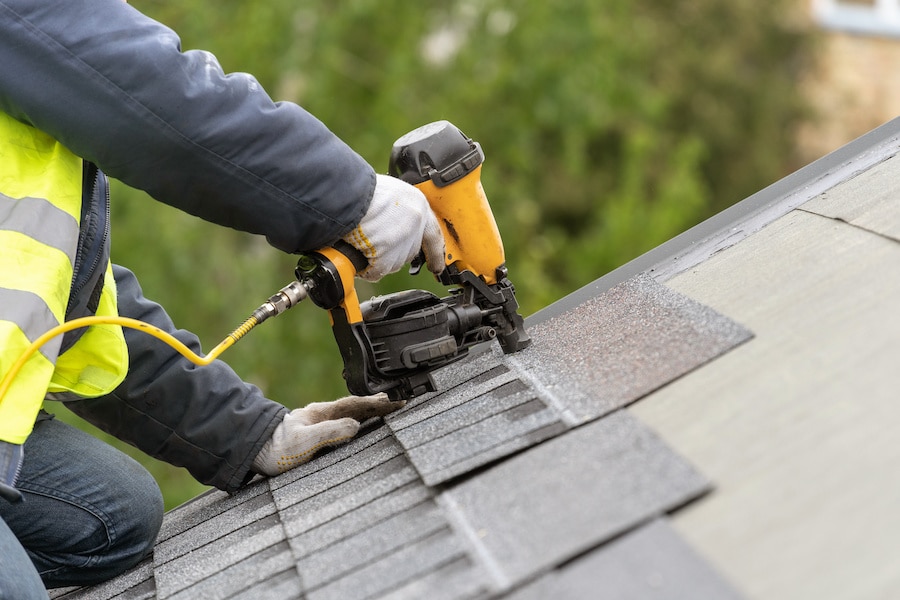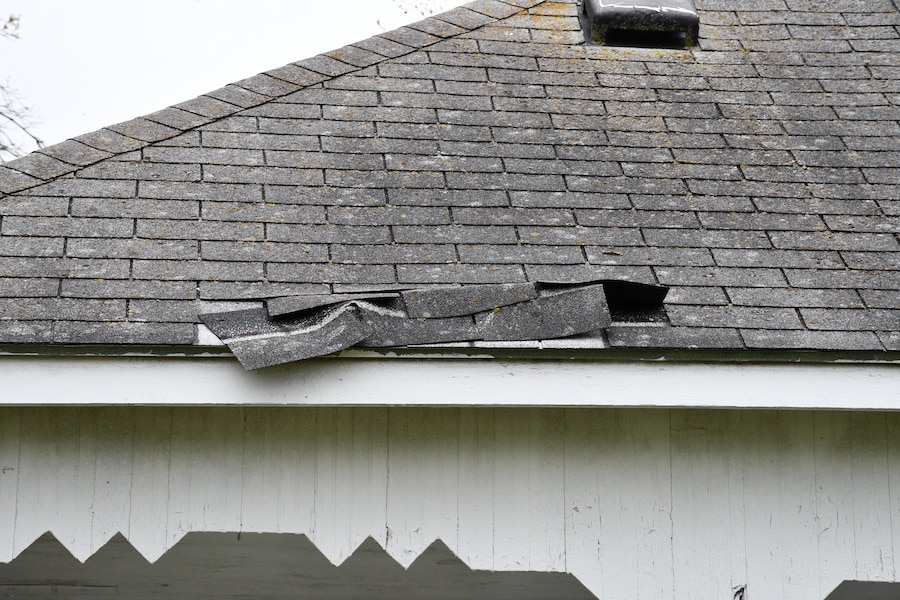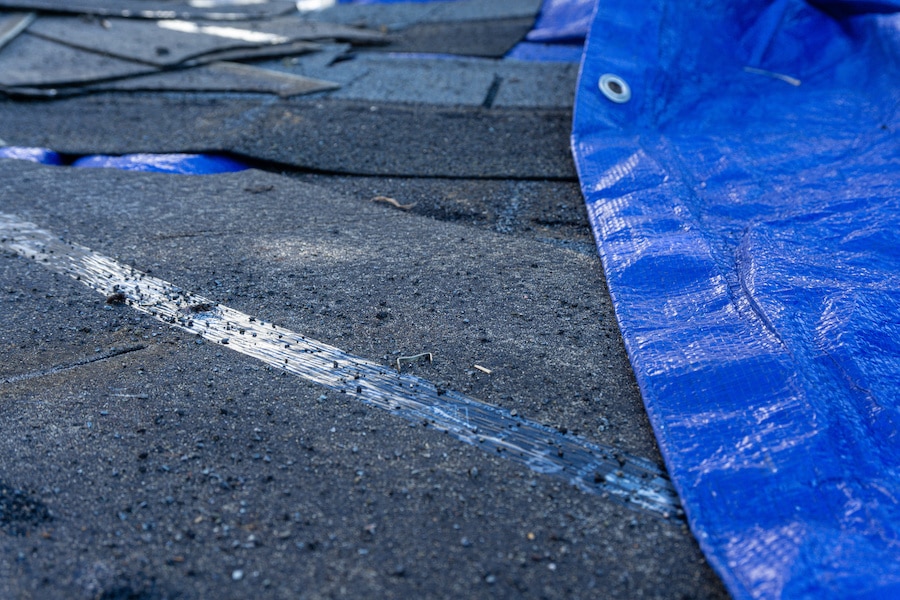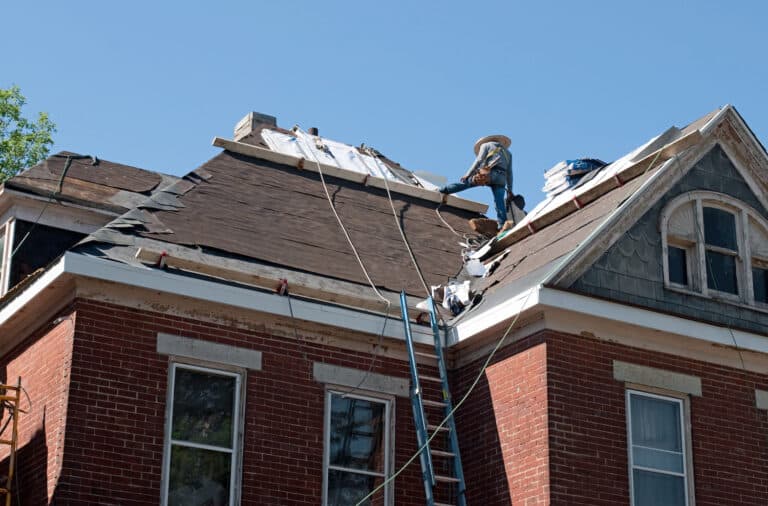How To Repair Roof Shingles That Have Blown Off (Step-by-Step)
A roof over your head is one of the essentials in life. It keeps you safe from the elements, warm in winter and cool in summer. Because your roof bears the brunt of nature’s forces, sometimes you can experience damaged shingles before your roof’s lifespan is up.
As a homeowner, knowing some basics to repair roof shingles blown off by windstorms helps you know what to look for and how to take care of your roof, even if you plan to hire professional services. So if you are a master DIYer or hire a roofing company for roof repair, this article will take you step by step through how to repair roof shingles that have blown off.
How A Shingle Attaches to Your Roof
Shingles are held by two methods: roofing nails and adhesive strips on the shingles. Wind and water are your roof’s worst enemies.
A professional roofer nails shingles through a specific spot so that each successive row overlays the next row in correct proportions. Roofing nails are short, sharp, and have a large flat head for holding shingles down.
There is a strip of adhesive along the underside about halfway down the shingle. The heat from the sun cures the adhesive making each row stick to the row below it.

Why Shingles Have Blown Off
Your roof stands up to some heavy forces of nature, such as high winds, snow, and torrential rain. Sometimes, you’ll notice some missing or cracked shingles after a bad storm. It is crucial to replace damaged or missing shingles right away.
When you leave even a small patch of damaged roof shingles unattended, water can seep under the adjacent shingles causing leaking and further damage.
There are several reasons why your shingles may not have held on during a windstorm. When you find damaged sections, it is vital to determine why the shingles have blown off so that you know how to perform roof repairs.
Faulty Installation
A few roofing shingles may blow off your roof because of faulty installation. Placement is a crucial factor in a quality roofing job. If the nail is too high on the shingle and not through the nailing strip, that portion could raise in a windstorm causing the shingle to blow off.
Adhesive Not Cured
As stated above, each row of asphalt shingles has adhesive strips that heat cure from the sun. It takes about four to six weeks for the adhesive to cure fully. If you have strong winds before the glue sets, you could have some damaged shingles.
In many cases, repairs are covered by your installer if you are within the curing time frame, and a major storm damages your roof. Contact them in that case.
Underlying Roof Damage
When you install new shingles, the nails need something to grab onto. If the underlying roof structure is dry-rotted, has mold growth, or has damage from unwanted pests, you may have weak spots where the nails won’t contact the wood.
When you notice blown-off shingles, you should head to your attic or crawl space to perform a roof inspection. Check for any underlying damage to the structure of your roof that may be the root cause of your problem.
If your roof damage goes deeper, replacing the shingle will not solve the problem. The next storm will likely damage the same spots.
Old Age
A new roof is a massive investment. Luckily, it should last between 20 and 30 years. Knowing your roof’s age will help you determine if you can replace small damaged spots or if a complete reroofing job is in order.

How To Repair Roof Shingles That Have Blown Off
Here is a step-by-step guide for repairing a blown-off shingle. Whether you plan to install a new shingle or just want to know what to expect from professional roofers, here is the process.
Roofing Material
- Roofing shingles (one bundle should be enough for small repairs)
- Pry bar
- Roofing nails
- Hammer
- Ladder
Carefully pry the damaged shingle and remaining nails without affecting the existing shingles. You can use a putty knife or a utility knife on any stubborn bits. Apply the pry bar or hammer like a nail puller.
Be sure to remove all the old nails and debris so that they do not affect how the next shingle will lay.
Because shingles overlap, you’ll need to raise the row above and insert the section of replacement shingle. Nail the new shingle in place, let the upper row back down, and replace the nails in that row. Remember, the nails in each row hold that row and the one below it.
Careful placement of the nails helps to prevent water from leaking through.

Risks In DIY Roof Repair
Replacing a roof shingle seems like a simple DIY project that anyone can manage. The process is quick with a few steps depending on how many spots need repair. Consider safety concerns and your experience with DIY roof repair.
Getting up on roofs is risky. Professional roofers use safety harnesses on the job. They also know what to expect with different roof pitches and recent weather conditions. A roof can look perfectly fine to the untrained eye but be slick after a light rain or frost.
While the process of how to replace blown-off shingles is straightforward, little to no experience could mean that you install the new shingle incorrectly. This could lead to leaking and making your problem worse in the long run.
DIY All-Stars
Some folks are handy as can be with roof repair. If you are one of those DIY all-stars who can fix anything, then repairing blown-off roof shingles can be a cinch.
Final Thoughts
When a storm comes along to damage your roof, you can save on the cost by purchasing the right materials and doing the work yourself. You may not be able to get exactly matching shingles due to fading on your existing roof. You’ll also have to purchase a whole bundle because you cannot purchase a few shingles at a time.
If you are not confident in your own roofing skills, you can contact a roofing company. Get your roof replaced by a professional.





